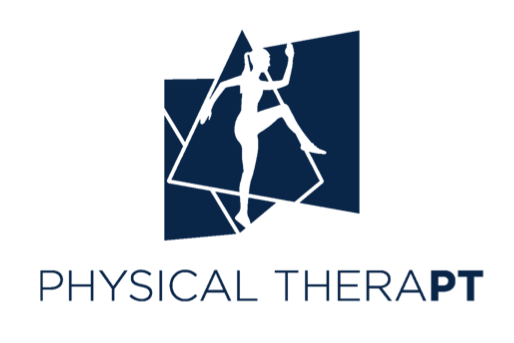We’re pushing pause on our injury spotlight series to talk about physical wellness in The Age of the Coronavirus. Over the next few weeks, we’ll share the latest research on how physical activity, immune function, and athletic durability all fit together. Want to know even more? Submit a question during IG office hours (@physical.therapt), every Friday!
Stress may not always deserve the bad reputation it’s gained, but it does require our attention. At its core, stress is simply a “physical, mental or emotional factor that causes bodily or mental tension.” Going for a run is a type of stress, so is that pre-race excitement you feel. Scrolling through too many tweets on COVID-19 causes stress, just like being sick can cause stress. What if we have the power to change how we interact with stress?
A study found that those who experienced high amounts of stress, and believed that stress to be harmful to their health, died earlier than those who experienced similar amounts of stress but embraced it. In fact, this group had the lowest risk of dying, even compared to those who experienced low levels of stress. Kelly McGonigal, author of The Joy of Movement, challenges us to shift our perspective, thinking of stress as a natural physiological preparation rather than anxiety. Any increase in stimulus causes increased heart rate, sweating and elevated breathing. Normally, our blood vessels constrict when we enter a sympathetic response mode. Yet in test subjects who see stress as a natural and positive, this doesn’t happen. The body mirrors a state of joy and courage.
The first step in managing these variables in our life is to take inventory. Use the charts below, and rate your levels for each. Focus on how you feel when you imagine that activity.
Exercise
Injury + Illness
Travel + Commuting
House + yard work
Exposure to pollution
Dehydration
Inadequate nutrition
Hormone imbalances
Lack of resources
Lack of social support
Loss of employment
Loss of a loved one
Financial challenges
Isolation
Deadlines at work
Final exams at school
Fears + anxiety
Information overload
Altered sense of time
Not feeling like yourself
Beliefs + stories
A sense of being not in control
Interpersonal relationships
Sense of meaning + purpose
Tap into your strength. The next time you’re facing a potentially stressful situation, try to focus on how prepared you are for this moment, and how you will be better for completing it. Find that game day energy in your every day challenges.
Walking the line of overstressed? That’s ok- these are stressful times. Mindset is only one piece of the stress management puzzle. In addition to gradually shifting the way we feel about specific stressors, we can focus on actively identifying when we are reaching our threshold, and have a plan in place to keep it from happening as often. For this post, we’ll be focusing on overtraining syndrome and how it relates to athletes. Similar criteria can be applied in other aspects of life, though!
Most athletes are constantly fluctuating. It’s normal to feel tired or sore after a challenging workout, but take note if you regularly experience more than three of the following symptoms: fatigue, depression, bradycardia or tachycardia (unusually slow or fast heart rate) insomnia, depression, agitation, irritability, lack or mental concentration or motivation, anxiety or restlessness, regularly awakening feeling unrefreshed, or regularly stiffness or soreness.
While there are many ways to describe how overtraining is experienced, there are three key stages outlined by the European College of Sports Science:
Functional Overreaching
A spike in training, resulting in short-term negative consequences, but yielding positive long-term performance improvement after a period of rest.
Pre-season, training camps, introduction to new styles of training
Experienced by most athletes
Non-Functional Overreaching
Prolonged intense training, with longer lasting negative consequences including increased psychologic and/or neuro-endocrinologic symptoms. Full recovery still possible after a period of rest.
Negatively impacts performance due to time away from sport needed to recovery, and impact on overall health
Playing in multiple leagues without an off-season, extended periods of multiple training sessions per day
Experienced by 15-60% of athletes depending on sport and level
Overtraining Syndrome
“Extreme nonfunctional overreaching” resulting in negative consequences lasting for greater than 2 months, with a negative impact on psychologic, neurologic, endocrinologic, and/or immunologic systems.
No performance benefits, and can end an athletic career based on overall negative experience
Years of constant training without appropriate rest, recovery or variety
Experienced in a small percentage of athletes, “extremely rare”
Okay, okay, mindset matters here, too. But it a more tangible and practical sense!
If you start to notice that you’re in a negative cycle with your sport, take a step back. Reflect on why you originally started training, and what the sport means to you today. Are your current actions sustainable? Will they help you reach your goals, or are they sabotaging you? Then, take a critical look at how you’re spending your time off the field; the three biggest pitfalls in recovery are inadequate sleep, inadequate nutrition, and inadequate stress management skills. We’ve put together a monthly one-page worksheet to make this task easier. Download it below, and bring your answers back next week as we outline each of the recovery pitfalls.
To read more about overtraining syndrome, check out this resource below:





